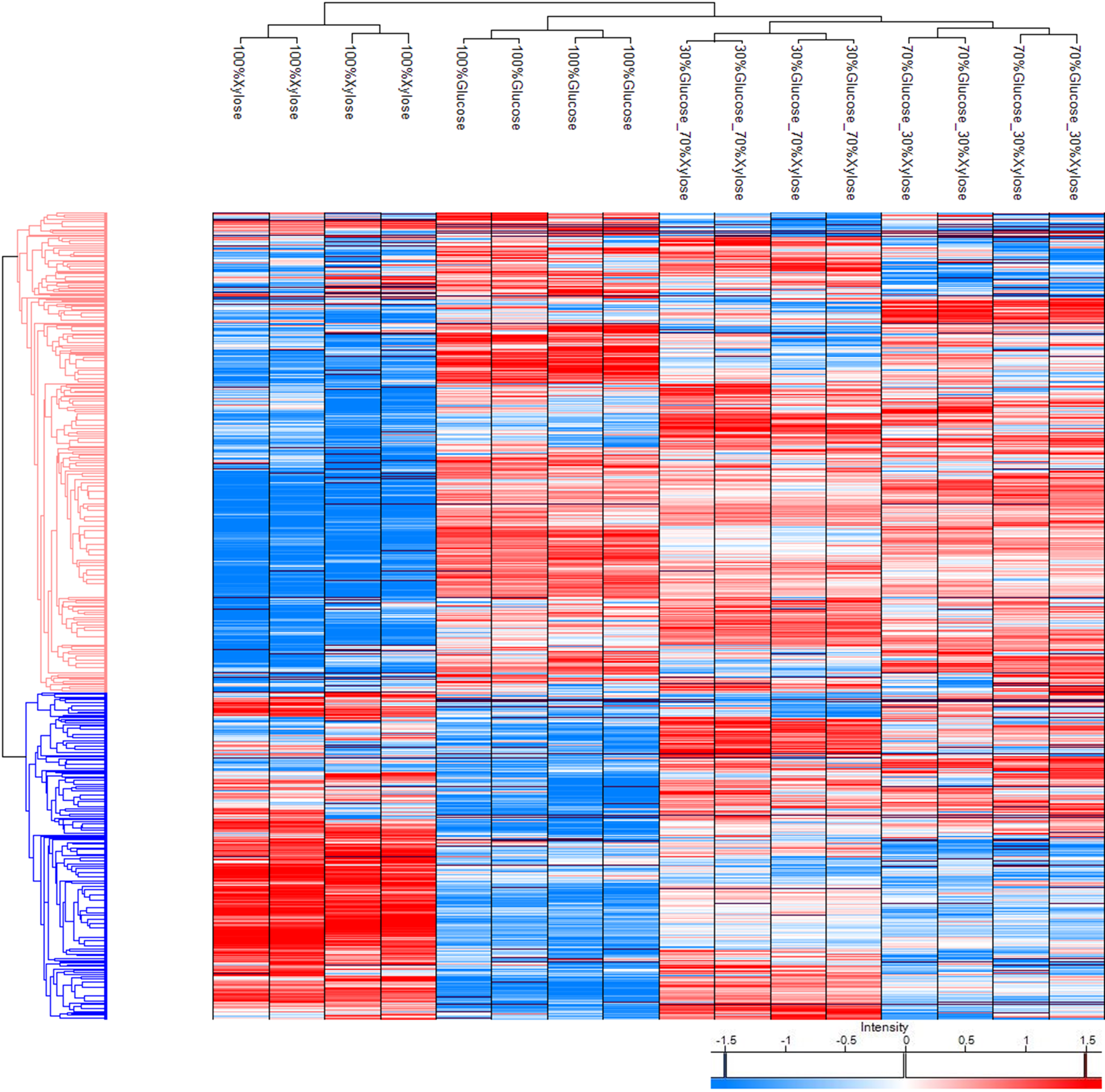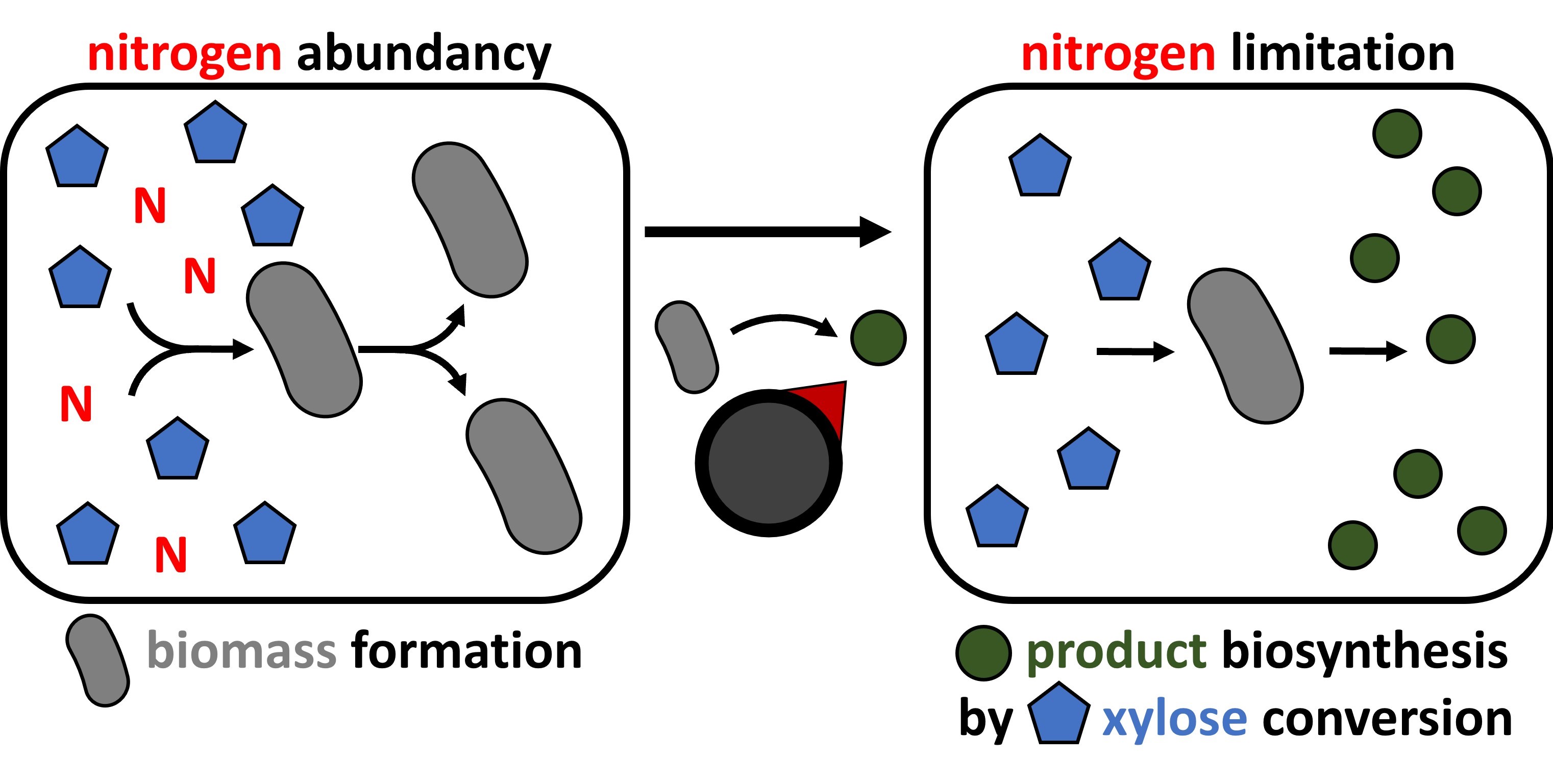Found 2 results
Article
25 March 2024Proteomic Analysis of Pleurotus ostreatus Grown on Glucose and Xylose Mixtures in Submerged Fermentation Provides Insights into Differentiated Mycelial Composition
Pleurotus ostreatus, an edible white-rot fungus of great commercial and nutritional value, grows by metabolizing mainly glucose and xylose, the two major sugars in lignocellulosic biomass. In this study, a comparative proteomic analysis of P. ostreatus grown in submerged fermentation on a medium with glucose, xylose and mixtures of them as carbon sources was conducted. In the same conditions, the metabolic response of the fungus was evaluated in the production of the main nutritional components of the fungus such as proteins, lipids, and intracellular and extracellular polysaccharides. The proteomic analysis revealed that glucose and xylose upregulate different clusters of proteins. Glucose mainly up-regulates macromolecule metabolic processes, translation and glycolysis whereas xylose up-regulates, small molecule metabolic processes and tricarboxylic acid cycle (TCA). The mixtures show mostly similarities with the proteome response to glucose, although there are differential responses depending on xylose concentration. The carbon source type found to affect the basic macromolecule metabolic processes, with amino acids biosynthesis to differentiate mostly. An analysis of the upregulated proteins through the STRING database revealed that xylose upregulates mostly proteins related to amino acid biosynthesis. Leucine, Valine and Isoleucine biosynthesis pathways were found to be the most triggered pathway. All the branched-chain amino acids (BCAAs)-related enzymes intensities were gradually increased when xylose concentration was increased in the growth medium. BCAAs play an important role in the human diet so the enhancement of BCAAs biosynthesis pathway for P. ostreatus could convert it to a very remarkable protein substitute in human diet. These findings provide new insights into the proteomic and metabolic response of the fungus to the major sugars of lignocellulosic biomass, which are not well understood until now.

Article
31 May 2023Nitrogen-controlled Valorization of Xylose-derived Compounds by Metabolically Engineered Corynebacterium glutamicum
The implementation of bioprocesses in an economically feasible and industrial competitive manner requires the optimal allocation of resources for a balanced distribution between biomass formation and product synthesis. The decoupling of growth and production in two-stage bioprocesses, aiming to ensure sufficient growth before the onset of production, is particularly relevant when target products inhibit growth. In order to avoid expensive inducer molecules, continuing process monitoring, elaborate individual process optimization, and strain engineering, we developed and applied nitrogen deprivation-induced expression of genes for product biosynthesis. Two native nitrogen deprivation-inducible promoters were identified and shown to function for dynamic growth-decoupled gene expression or CRISPRi-mediated gene knockdown in C. glutamicum with superior induction factors than the standard IPTG-inducible Ptrc promoter. Valorization of xylose to produce either the sugar acid xylonic acid or the sugar alcohol xylitol from xylose as sole source of carbon and energy was demonstrated. Competitive titers of up to 34 g·L−1 xylonate and 13 g·L−1 xylitol were achieved in two-stage processes. We discussed that the transfer to bioprocesses with C. glutamicum using carbon sources other than xylose appears straightforward in particular regarding production of growth-inhibitory compounds by their growth-decoupled fermentative production.
